Ignác Schlick was born on 13 April 1821 in Pest. After secondary school and finishing his studies as a copper founder, he studied the art of iron founding in France, Switzerland, and Germany for seven years. After returning home, he opened an iron foundry in Víziváros and then in the industrialising Ferencváros. After that, he became the manager of the foundry of the Óbuda shipyard. A few years later, he reopened his iron foundry in Víziváros, on Fő Street, in 1860 and thus founded his own company.
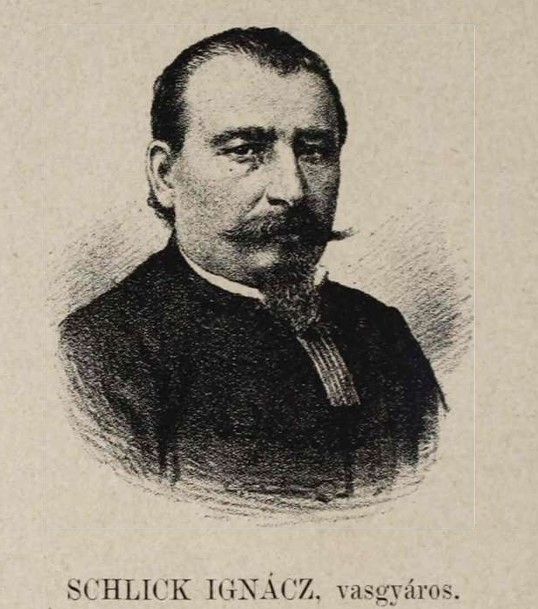
Portrait of Ignác Schlick in Mór Gelléri's 1887 book "A magyar ipar úttörői: élet- és jellemrajzok" (Pioneers of Hungarian Industry: Oeuvres and Character-Studies)
For a prospering company that received more and more orders, the location in Buda soon proved to be small, so in 1862, after receiving a factory permit, Schlick sought a new location. In Pest, on the plot bordered by 41 Gyár Street (now 34 Jókai Street, 6th District) and 42 Váci Boulevard (today's 57 Bajcsy-Zsilinszky Road) first he planned a smithy, then a year later he commissioned Lajos Frey and Károly Gerster to plan an iron foundry, and soon it was already operating on the site.
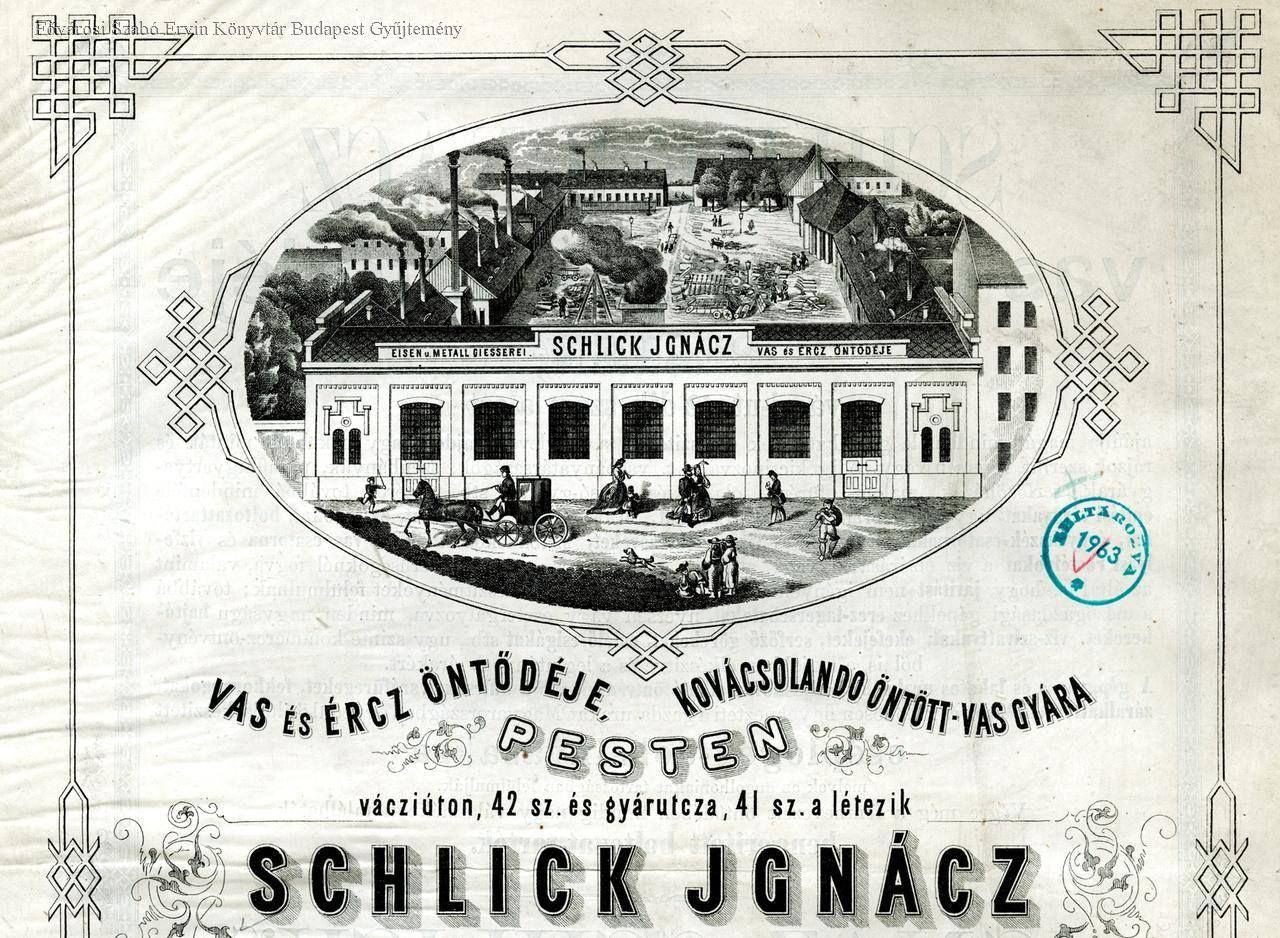
The 1865 advertisement of the Schlick factory in Terézváros with a contemporary engraving (Source: FSZEK Budapest Collection)
Schlick thus laid the foundation for his company, which would soon become world-famous. Pest-Buda's development and changed architectural techniques during this period resulted in an increasing number of orders: they made various castings, columns, railings, balconies, brackets, parts for agricultural machinery, as well as fountains and cast iron candelabras.
The significance and influence of Ignác Schlick are exemplified by the fact that when the Hungarian Association of Engineers was founded in 1866, he was among the founders as a representative of the iron industry. After his early death on 23 December 1868 (according to other records, he died in 1869), his son-in-law, Frigyes Langenfeld, took over the management of the company. In 1869, the company was transformed into a joint-stock company with a share capital of 500,000 HUF.
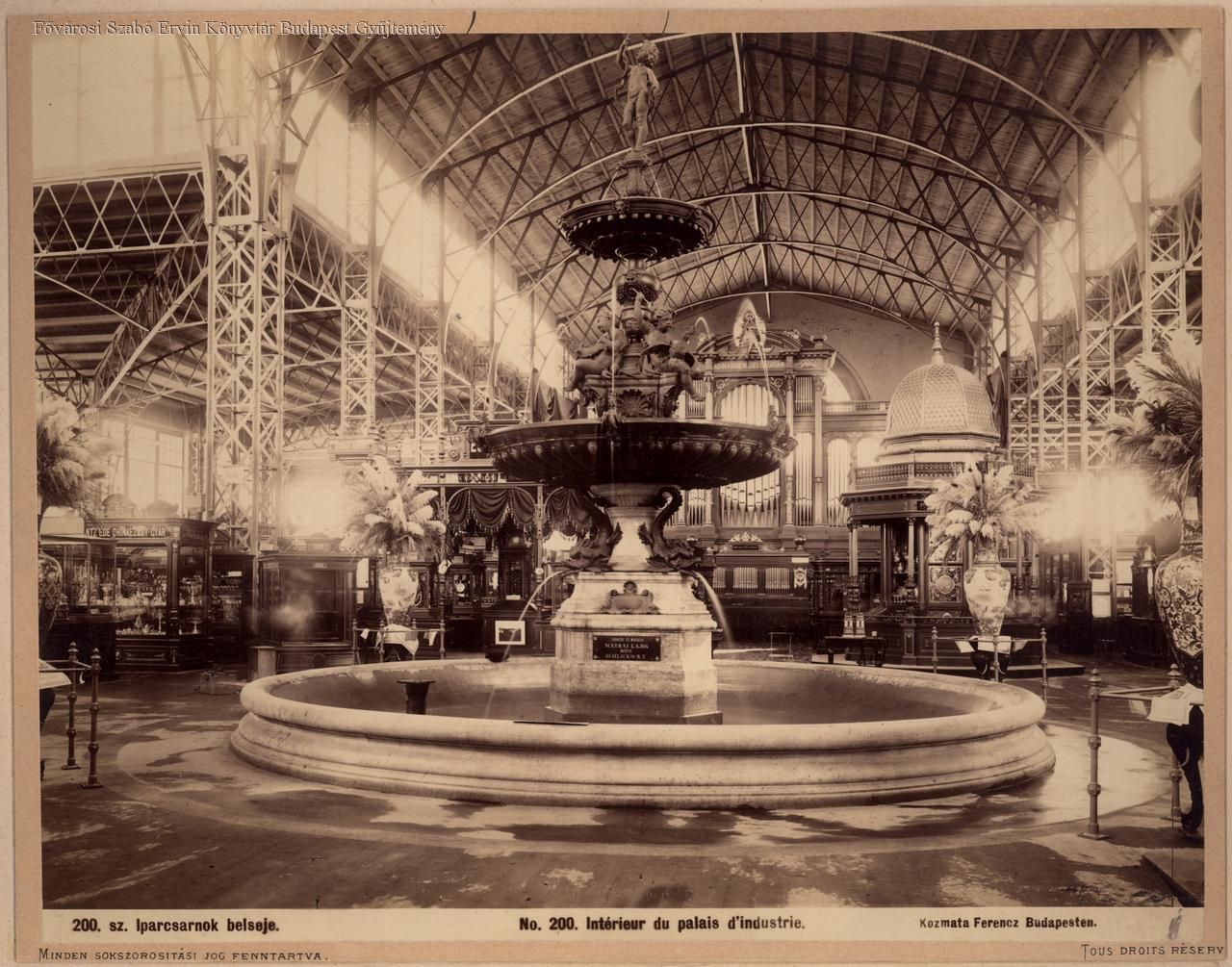
The iron structure of the Industrial Hall, built for the National General Exhibition in 1885, was made by the Schlick factory. The photo was taken in the year of the exhibition (Photo: FSZEK Budapest Collection)
In 1873, at the Vienna World Fair, Schlick's Vasöntöde és Gépgyár Rt. (Iron Foundry and Machine Factory JSC) won several awards. At the time, larger iron structures, bridges, boilers and pumps were also produced by the factory. The curtain walls of the Nyugati Railway Station, which opened in 1877, were also made by the Schlick factory.
After 1882, in several instalments, the factory was gradually relocated to 29–37 Külső Váci Street (today's 45-47 Váci Road), to a 23,000 square fathoms large plot. In 1887, Frigyes Langenfeld handed over the management of the company to the son of the founder of the factory, Béla Schlick, who ran it until his death in 1899. The capital developed rapidly after the unification of 1873; a whole series of public institutions and residential buildings were built. In parallel, orders from the Schlick factory grew steadily, with the iron structures of many new public buildings being manufactured in whole or in part by them.
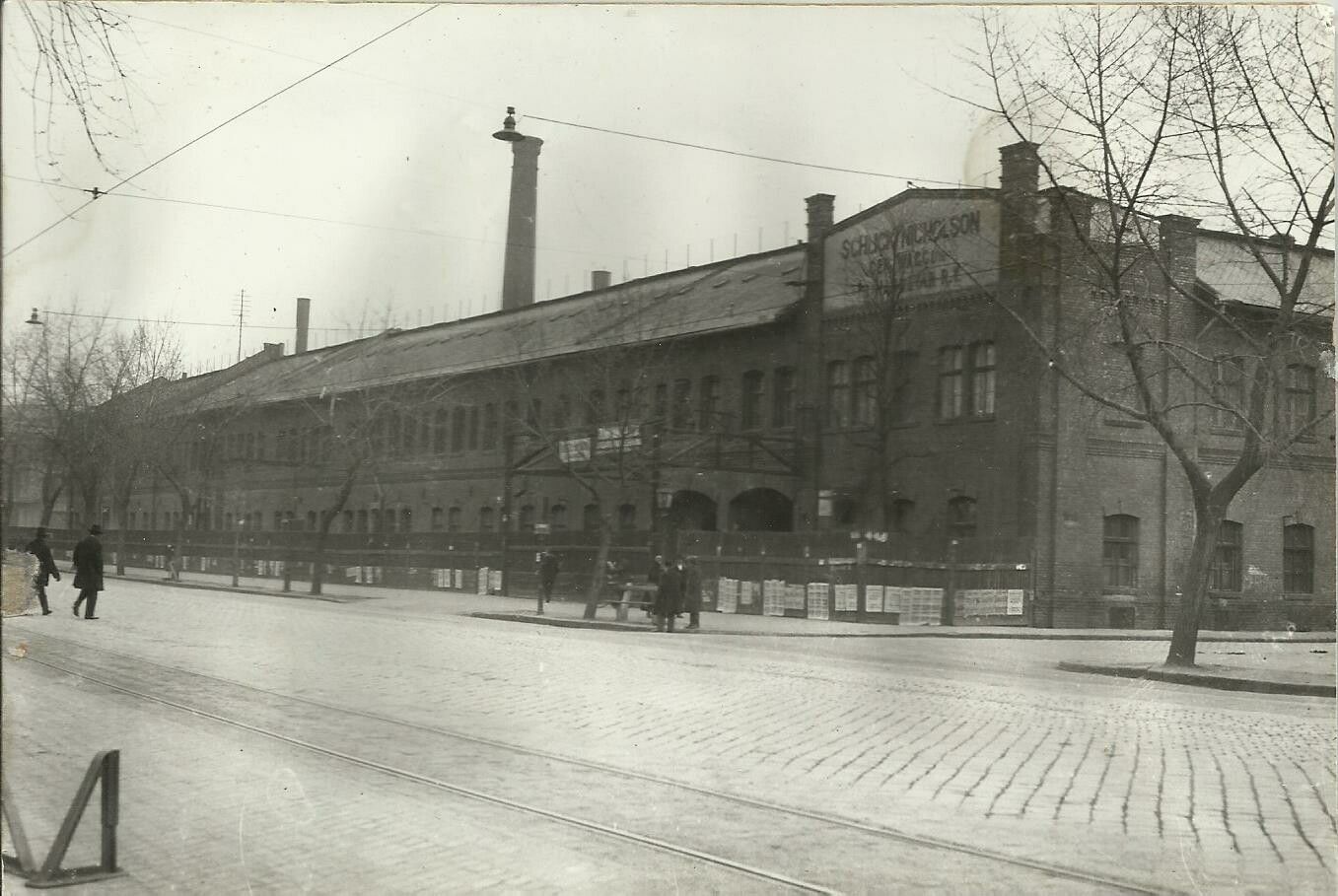
The factory of the merged Schlick-Nicholson company on Váci Road in the 1920s (Source: Angyalföld Local History Collection)
Their most significant ironworks included the dome of the Parliament completed in 1904, the stage and roof structure of the Opera House and the Blaha Lujza Square Folk Theatre (later the National Theatre), the curtain wall of the Keleti Railway Station, the roof structure of the Hungarian Academy of Sciences, the Curia, the University Library, the Klotild-palaces, the Stock Exchange Palace, the Ludovika, the Main Customs Office, the Central Market Hall, the Technical University and the iron structure of the Industrial Hall for National Exhibition in 1885, the dome of the Museum of Applied Arts and the Basilica, and the supporting structures of many palaces on Andrássy Avenue.
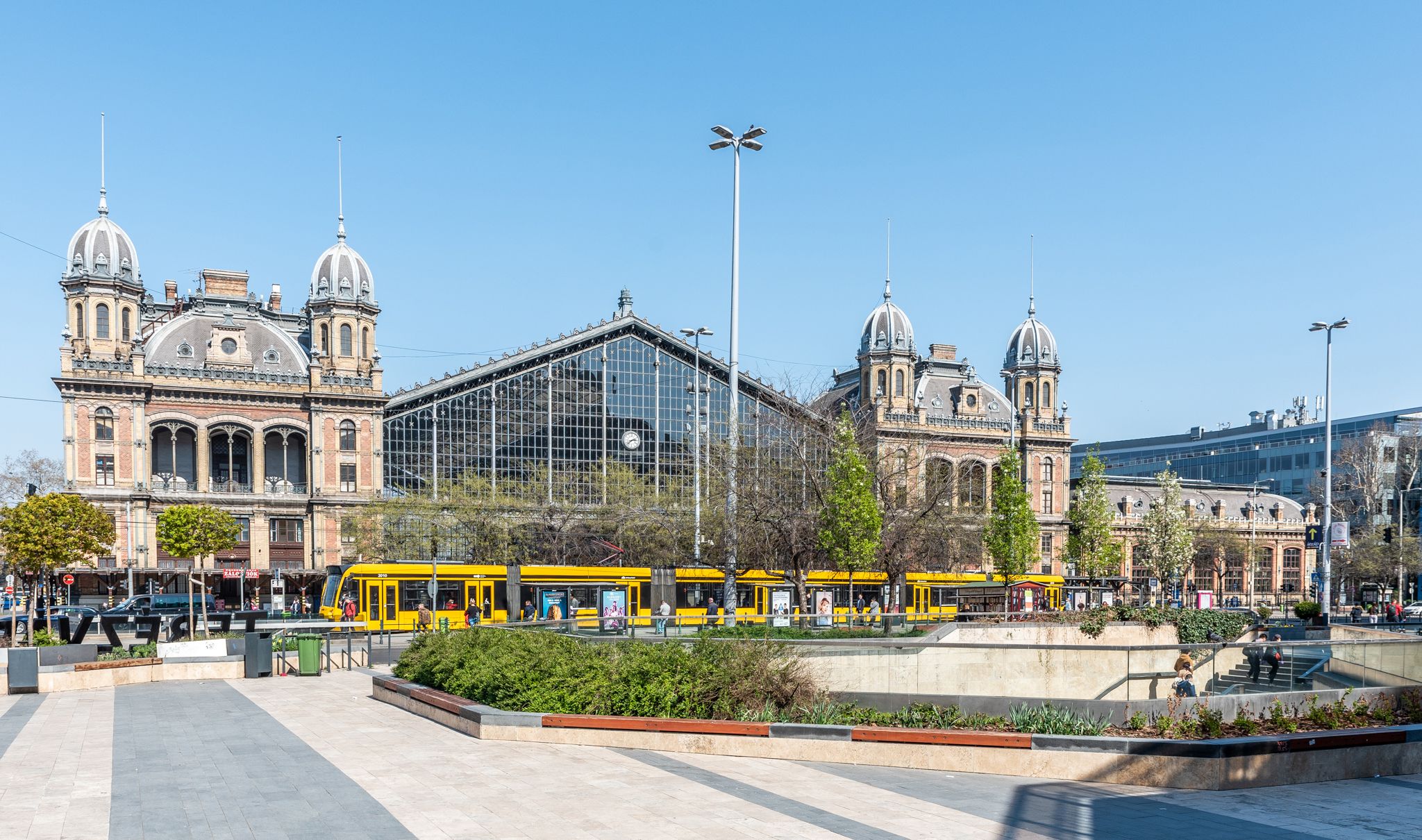
The iron-glass curtain wall of the facade of the Nyugati Railway Station was made by Ignác Schlick's factory (Photo: Balázs Both/pestbuda.hu)
Among the industrial facilities, the steel structure of the Elevator House designed by Keresztély Ulrich and the pumping station on Soroksári Road were also made by the Schlick factory, as well as the tinsmith works on the Royal Postal Savings Bank, Gresham Palace and New York Palace and many pavilions of the 1896 Millenium Exhibition, their completion also increased the company's reputation.
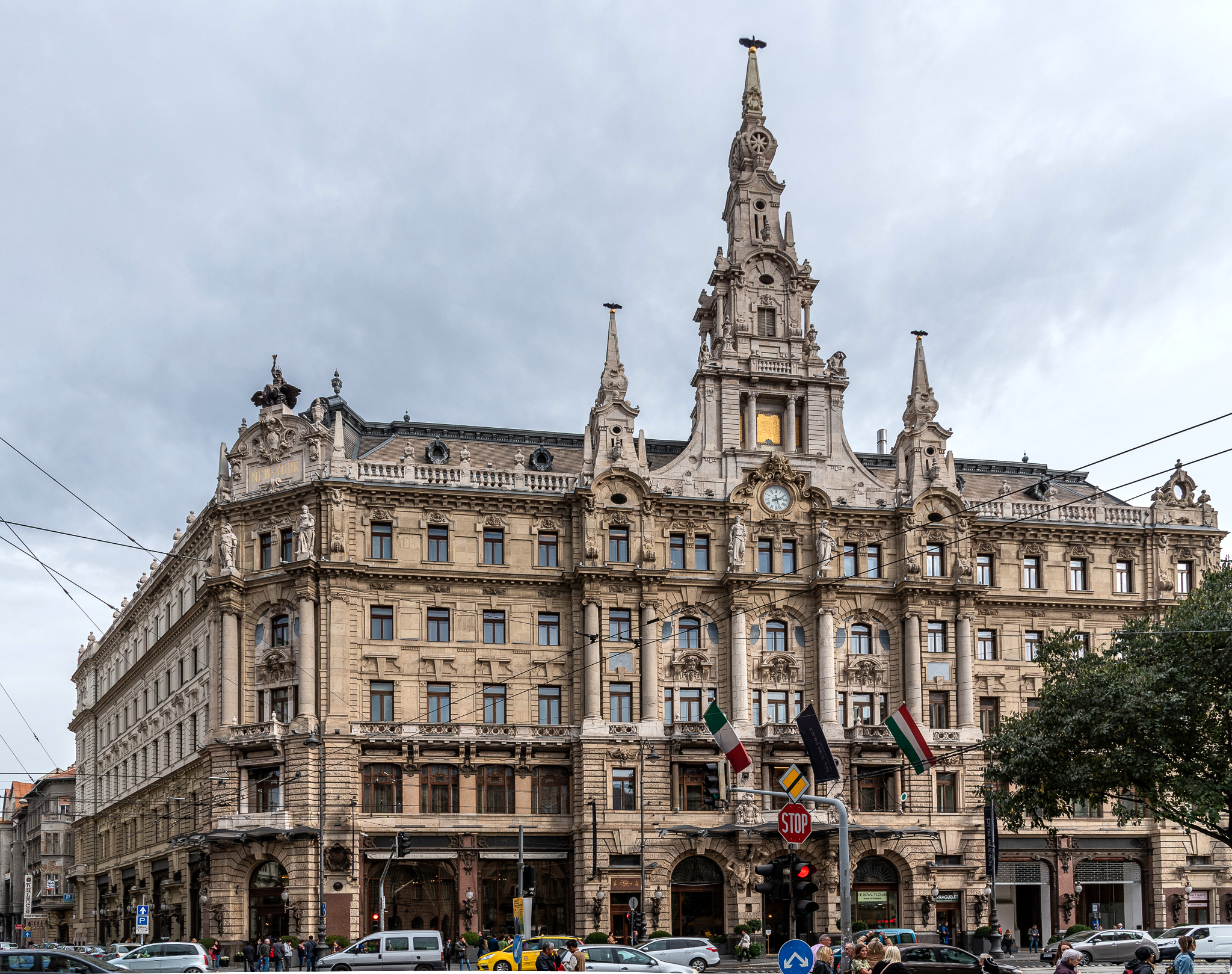
The tinsmith works of the New York Palace, built between 1892 and 1894 according to the plans of Alajos Hauszmann, were also made by the Schlick factory (Photo: Both Balázs/pestbuda.hu)
From 1892, the Schlick factory also produced trams: by 1915, nearly 800 tram railmotors and more than 400 tram wagons had been produced. The support structure, wagons, and several ornate surface stations of the Millennium Underground Railway were also made there. Different types of train wagons and passenger cars were manufactured on the order of the Hungarian Royal State Railways and several suburban or local railways (helyiérdekű vasút - HÉV).

BVVV L-type trams were also the products of the factory between 1913 and 1923 (Source: FSZEK Budapest Collection)

The underground coach, with which Ferenc József also travelled in 1896 (Source: FSZEK Budapest Collection)
In 1896, the reinforced concrete structure of the 85-meter-long Nádor Bridge in City Park (today: Kós Károly Bridge), designed by Szilárd Zielinszki, was manufactured by the Schlicks, as were the iron structure elements of Erzsébet Bridge, built in 1903.
The factory already had a sculpture workshop when Ignác Schlick founded it, but their most significant work in this field is from after the 1880s. The mausoleum of Ferenc Deák was completed in 1887. The 6-meter bronze statue of Genius, which adorns its roof, was designed by György Kiss and made in the foundry of the Schlick factory. Also in 1887, Adolf Huszár, Ede Mayer and Adolf Keszler created the Deák Monument in Széchenyi István Square in the city centre. The group of sculptures was cast in the Schlick foundry, similar to several sculptures adorning the facade of the Parliament and the Keleti Railway Station.
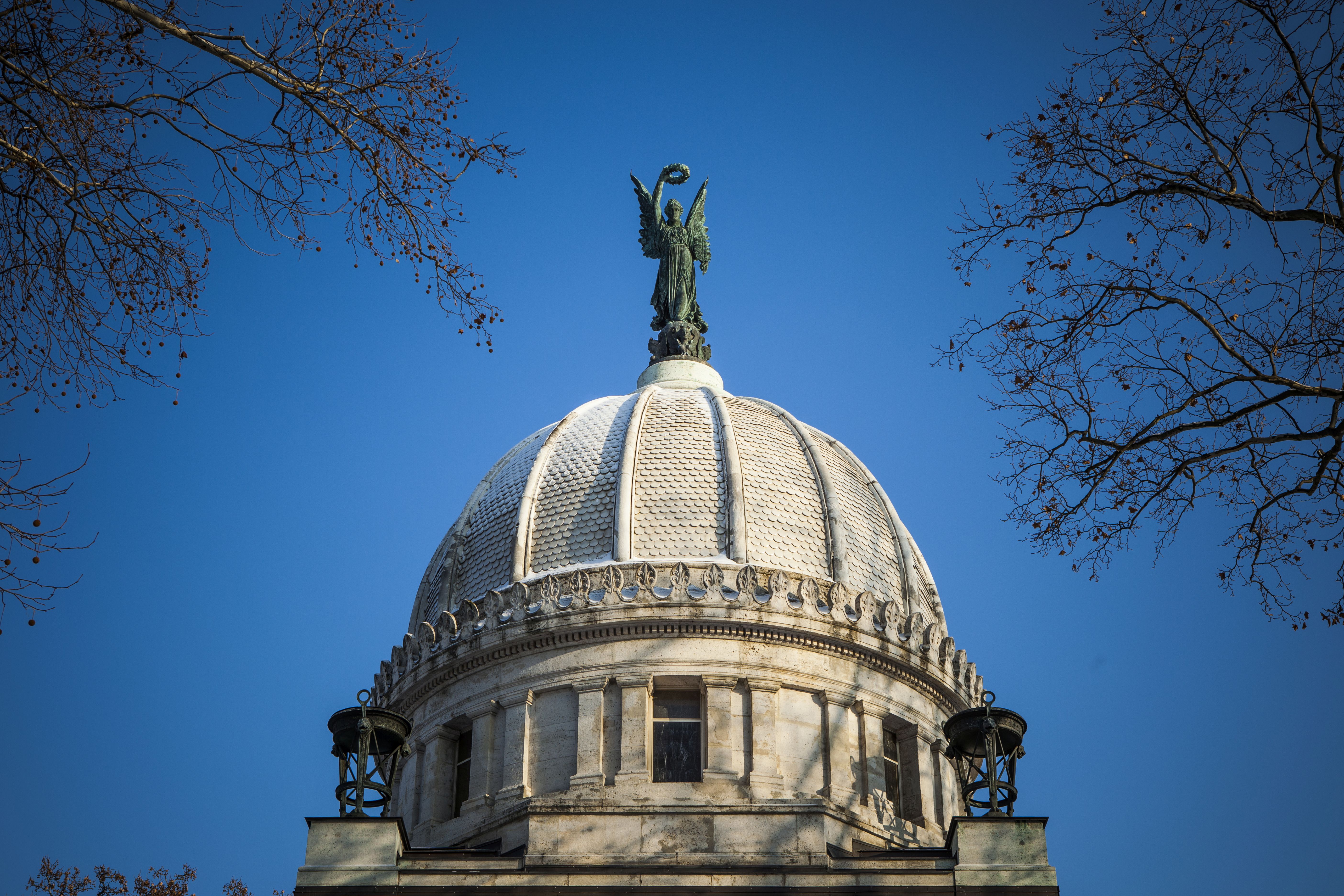
The six-meter Genius bronze statue adorning the roof of the Deák Mausoleum, completed in 1887, was made in the foundry of the Schlick factory (Source: National Heritage Institute)
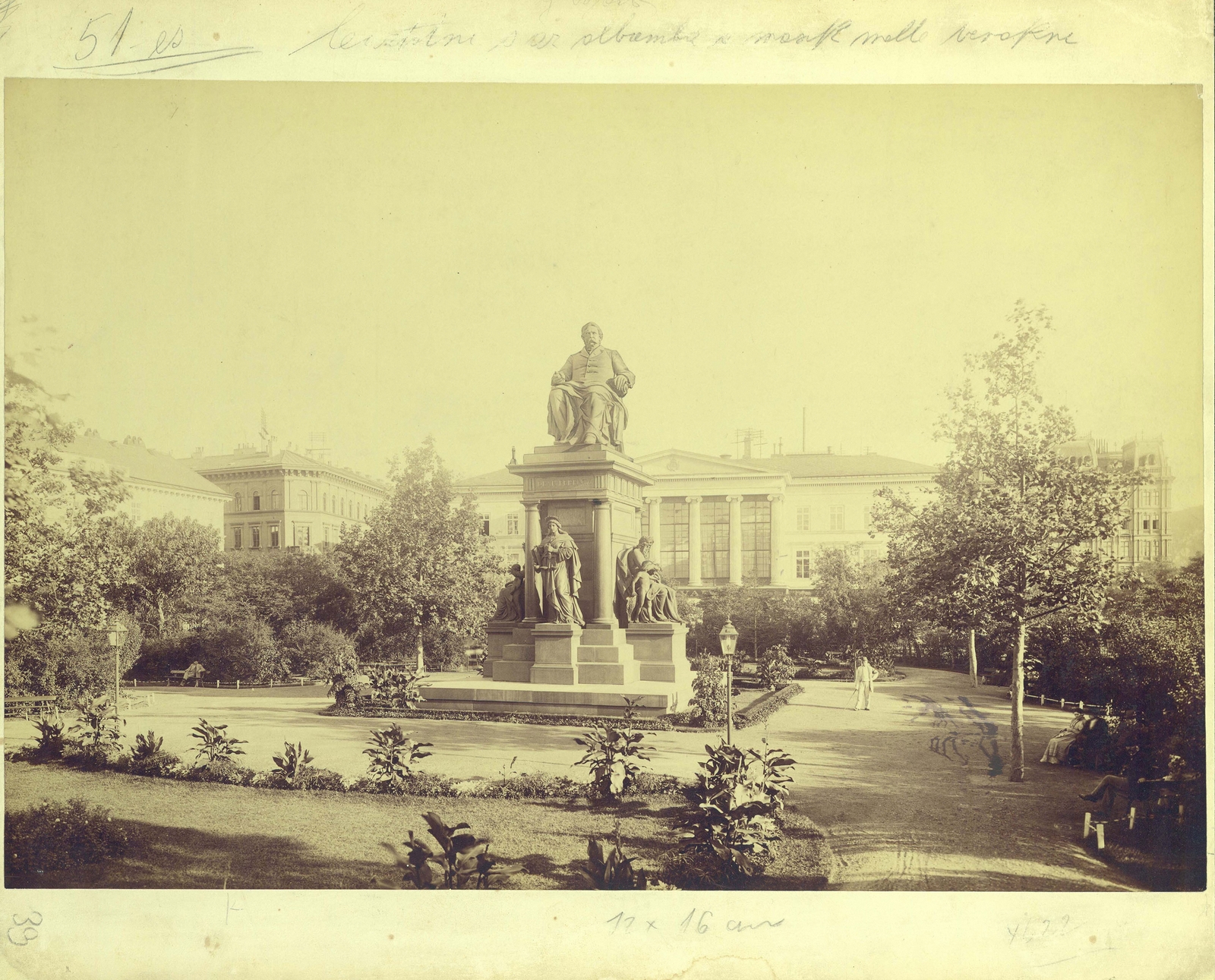
The Deák Monument in today's Széchenyi Square, photographed by György Klösz in 1896, with the Lloyd's Palace behind it (Source: Fortepan / Budapest Archives. Reference No.: HU.BFL.XV.19.d.1.01.026)
The company's share capital in the early 1910s was 4 million crowns; 2,000 skilled workers and 200 work hands were employed at the time. In 1912, the company merged with Nicholson Gépgyár Rt. Nicholson brought shipbuilding into the company profile as well.
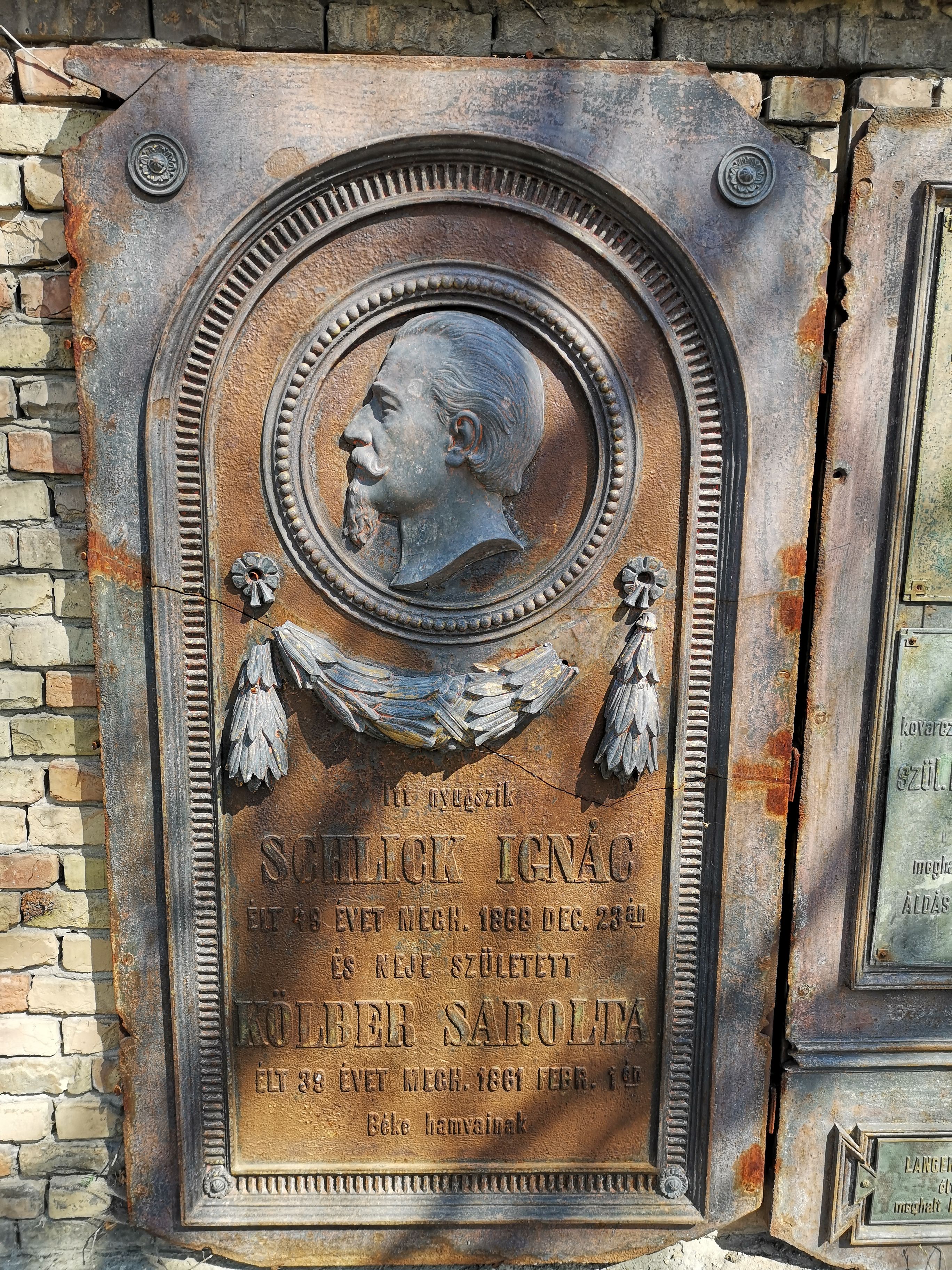
The relief tombstone of Ignác Schlick in the cemetery on Fiumei Road (Source: National Heritage Institute)
The end result of World War I, and especially the Treaty of Trianon, created a new situation for the iron and machinery industry. The market shrunk significantly, machinery plants became oversized, leaving half of the company's capacity unused. Avoiding bankruptcy, in 1927, the Schlick-Nicholson factory merged with Ganz és Társa Danubius Rt. Thus, the 67-year long history of the Schlick factory came to an end, despite it playing such an important role in the development of Budapest.
Reviewing the history of the factory, we can only agree with Mór Gelléri, who described Ignác Schlick as follows:
"As a founder and pioneer, he is among those whose names are engraved in bright letters in the history of Hungarian industry, and whose example we present to today's young generation as worthy of following."
Cover photo: The structure of the dome of the Parliament can also be attributed to the Schlick factory (Photo: Both Balázs / pestbuda.hu)

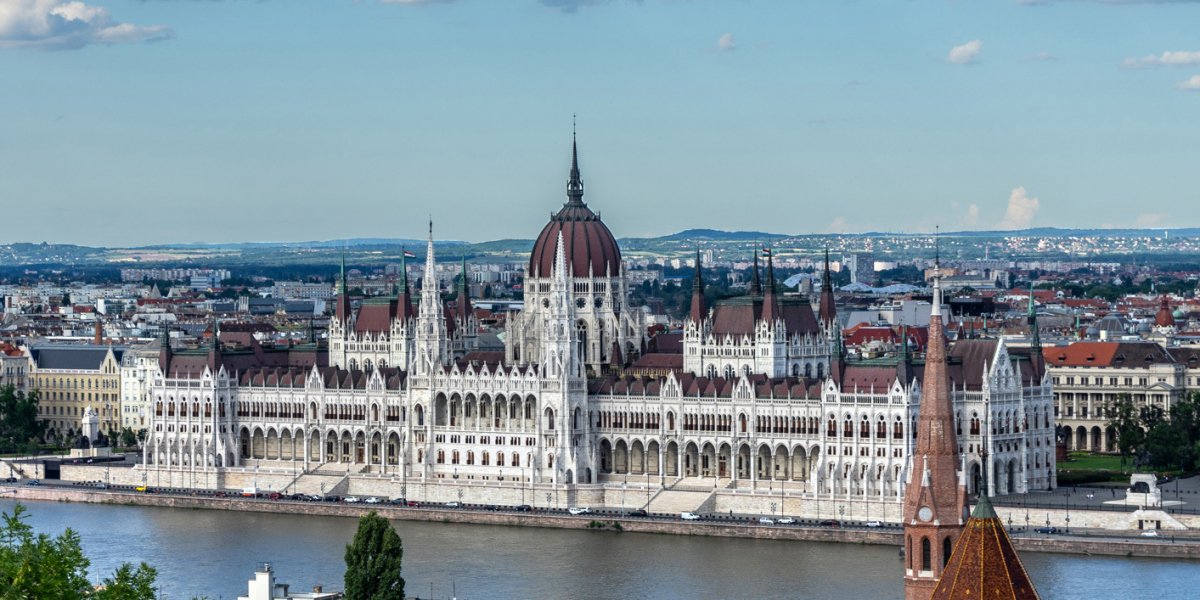



































Hozzászólások
Log in or register to comment!
Login Registration